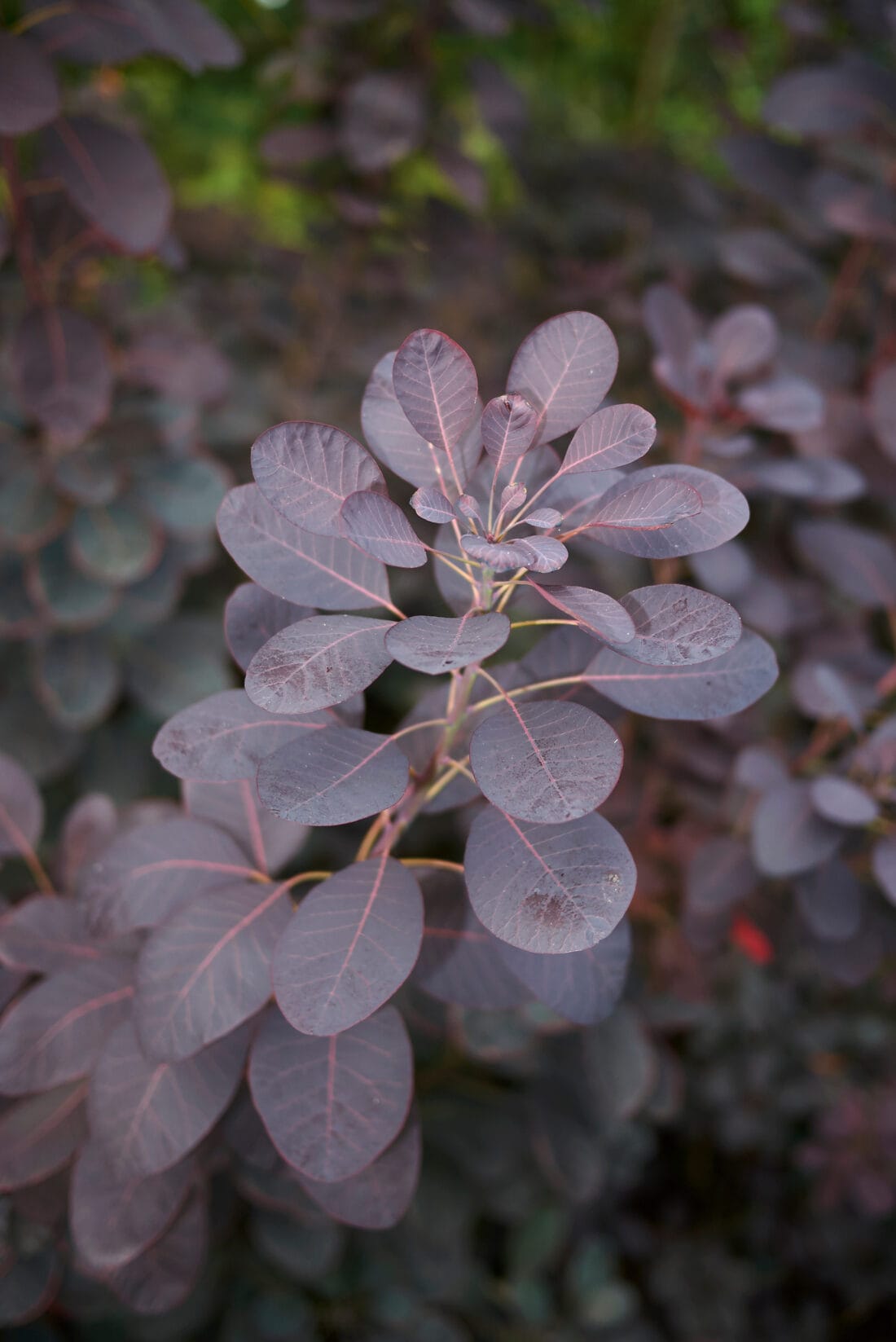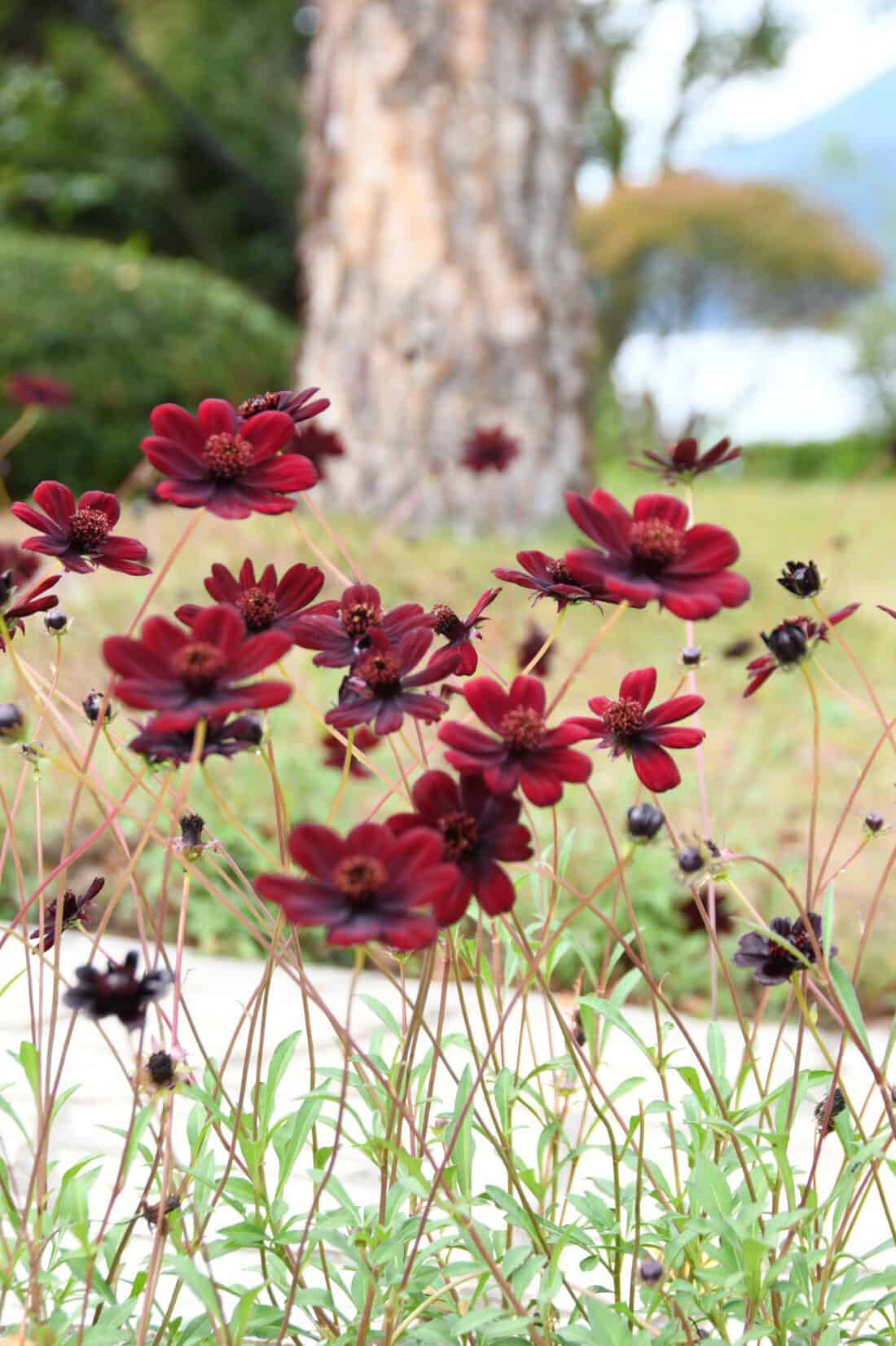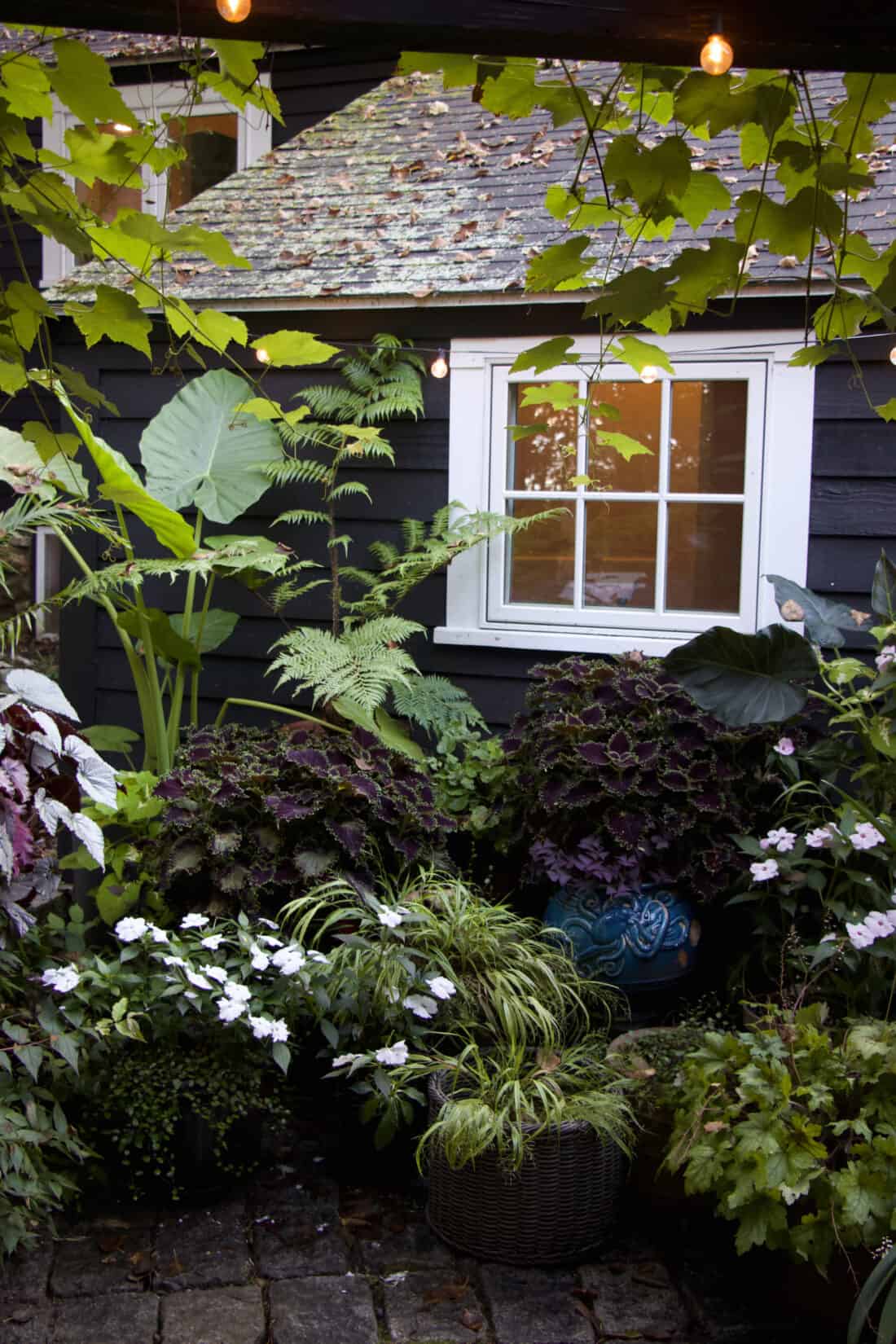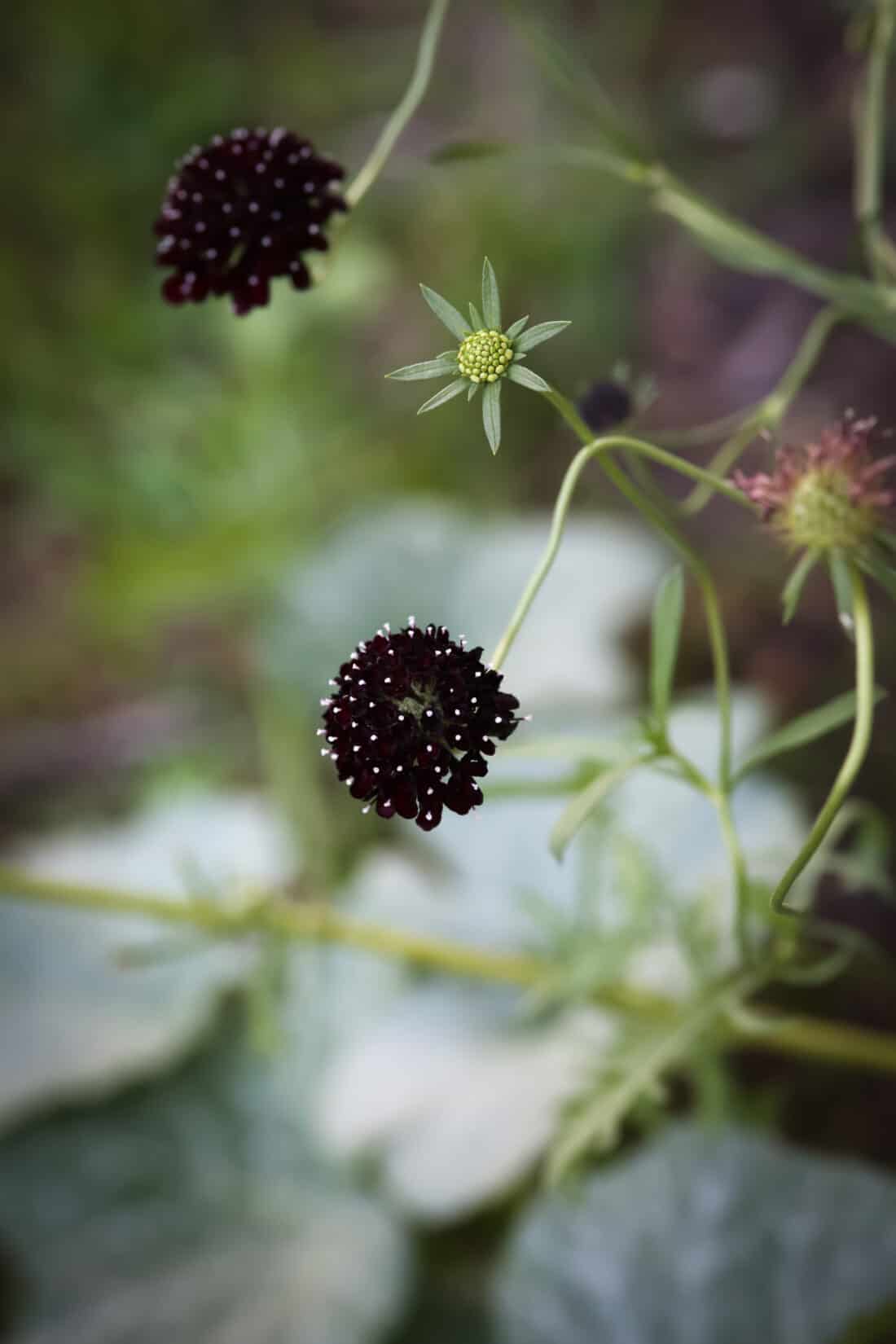Plants with black flowers and dark foliage are uncommon and defy our expectations of nature. It is their very difference that makes them so appealing, as we humans seem to be drawn to anomalies.
Black flowers are useful in garden design, partly because they are curiosities. By weaving these strangely wonderful plants and flowers into our gardens, we can add interest, intrigue, and sophistication.

Black flower and plant inspiration – Top image (clockwise)
Black Beauty Gladiolus – Photo by Margaret Jaszowska. Queen of the Night Tulips image by Job Vermeulen. (also consider Black Parrot Tulips). Acalphya wilkesiana – Copperleaf photo by Emmanuel Ben-Paul . Jack Spratt New Zealand Flax – Phormium Photo by laura adai. Photo by Andrew Neel for similar large black leaves try Black Coral Elephant Ear. Aeonium Arboreum Schwarzkopf image by alevision.co.
To Make the Most of Black Flowers and Plants in your Garden Follow these Guidelines:
1) Marry dark with light.
To maximize the impact of dark-colored foliage and black flowers, look for opportunities to create contrast. Interesting color partners include lime green, silver, white, cream, pale yellow, lavender, and soft pink. Black foliage can serve as a backdrop to these shades so that it enhances the vibrancy of adjacent colors. Use black plants to make neighboring plants pop.
As you lay out your planting plants, try to create a dramatic contrast with adjacent or backdrop plants. Black plants will disappear unless you set them against lighter-colored foliage, flowers, or garden structures, drawing the eye and adding visual interest.
Black plants are also really great if your house color is lighter – the black will stand out better than with a darker-colored house.
Think about depth and balance. The deep, inky hues of black blooms, such as those found in varieties like Black Velvet Petunias or the leaves of Black Mondo Grass, create a striking focal point amidst a sea of lighter, ethereal tones. This interplay of dark and light not only adds a touch of drama to the garden but also lends a sense of depth and balance.
I you need some planting ideas for pairing dark plants with other things you might have in your garden, I have put together some exciting combos for you to try in this post.

Image By simona
2) Don’t hide black flowers in the shadows.
Dark-colored plants are difficult to see in the shade. Planting them in a sunny spot is far more effective. Dark, glossy petals and shiny black leaves take on a silvery sheen in the sun, adding another level of visual interest.
Also, sunlight typically intensifies deep pigments, so most the dark-leaved and black-flowered plants are at their darkest when grown in the sun.

3) Venture beyond the black garden flowers and perennials – Try Black Leaved Trees and Shrubs As Well
To make a bigger statement, look for black-leaved shrubs and trees.
Any medium to large-sized yard will benefit from at least one dark-leaved tree and a handful of dark-leaved shrubs. These larger masses of deeply colored foliage will add depth to your planting design.
Most plants have green leaves, so creating a garden scheme where all the plants don’t visually turn into just one giant sea of greenness can be a trick.
Varying texture helps – and so does varying foliage color. Black and dark-leaved shrubs will break up the expanses of other foliage so that all the plants, trees, and shrubs that you have chosen to grow can make a more distinct impression on your eye as you take in the whole beautiful scene.

4) Keep Containers of Black Leaved Plants to Move Around and Experiment with in your Garden.
There is nothing better than trying something on to tell if you love it or hate it. The same goes in the garden.
If you have purchased a dark-leaved shrub, move it around your garden and set it in different beds to see how it changes the bed and your view of the wider landscape. There is nothing better than some experimentation to teach yourself how to design.
What you will find is that in some places, the black shrub might take on the job of being a focal point. In other cases, it will add depth, and in other cases, it will push other plants or features forward.
You can see how this works in the image above and below where I played with Coleus ‘Black Magic’ in a couple of different container garden settings. Plants with dark flowers and foliage are as exciting in the landscape as they are in containers and perennial gardens.


5) Use Black Plants strategically to create a Mood and to Add elegance and Sophistication to Your Plantings.
They can set the mood and atmosphere in the garden, whether it’s a romantic, mysterious, or modern ambiance you’re aiming for.
Black plants bring an element of elegance and sophistication to garden spaces, evoking a sense of luxury and style.
Black plants often maintain their dark color throughout the growing season, providing year-round visual appeal and structure.
By incorporating black plants into your garden design, you can achieve a wide range of aesthetic effects and elevate the overall visual impact of your outdoor space.

6) Bring them indoors in Garden Fresh Floral Arrangements too.
High-end florists love black flowers for their chic style and elegance. You can grow many of their favorite varieties in your own garden to make beautiful and elegant garden bouquets.
Give your flower arrangements a touch of magic by growing cut flower favorites such as Dahlia ‘Nuit d’Ete,’ Gladiolus ‘Espressso,’ Allium atropurpureum, Zantedeschia ‘Night Cap,’ Scabiosa ‘Black Knight’ Chocolate cosmos, and Centaurea ‘Black Gem.’
You might also like posts about black plants and using black in garden design:
Share this post:


+comments+